If you are in Azerbaijan anytime soon, be sure to visit Ganja — Azerbaijan’s second largest city located roughly 223 miles west of the country’s capital city of Baku. The city’s famed ancient mosques, palaces and towers, madrasas and caravanserais, mausoleums of rulers and poets, and mouth-watering cuisine are just some of the many reasons to pay the region a visit.
Getting there is a relaxing drive for those that love road trips, but the region is also accessible by train and plane. Trains depart at night and take about seven hours to reach what are some of Azerbaijan’s most breathtaking sites.
See: Sheikh Baha al‐Din Complex
Kick off your trip to Ganja by visiting the site dedicated to Baha al‐Din Muhammad ibn Husayn al‐Amili — a scholar, philosopher, architect, mathematician, astronomer and poet – who lived in the late 16th and early 17th centuries. The complex includes the Juma (“Friday”) Mosque as well as the Chokak Hamam (a bath) and Caravanserai, centuries-old roadside inns found throughout western Asia, where travelers could rest and recover from a day's journey.
Baha al‐Din is believed to have been an excellent astronomer who used his knowledge while constructing the mosque. The architect designed it in such a way that the shadows falling on the western wall of the building disappear exactly at noon, indicating the time for midday prayers.
A short time later, Baha al‐Din built the Chokak Hamam next to the mosque. This building has become a bath with two communicating rooms, which once featured a pool and a fountain. The bath was heated with wood, while steam was fed into the rooms through ceramic pipes passing through walls and floor of the bath. This unique system worked perfectly until 1963, when the bath was closed to visitors.
The Caravanserai is the third and last building in the complex. Today, the medieval-era structure houses a museum dedicated to the female Azerbaijani poet Mahsati Ganjavi. The two-story building includes 15 halls and 54 rooms.
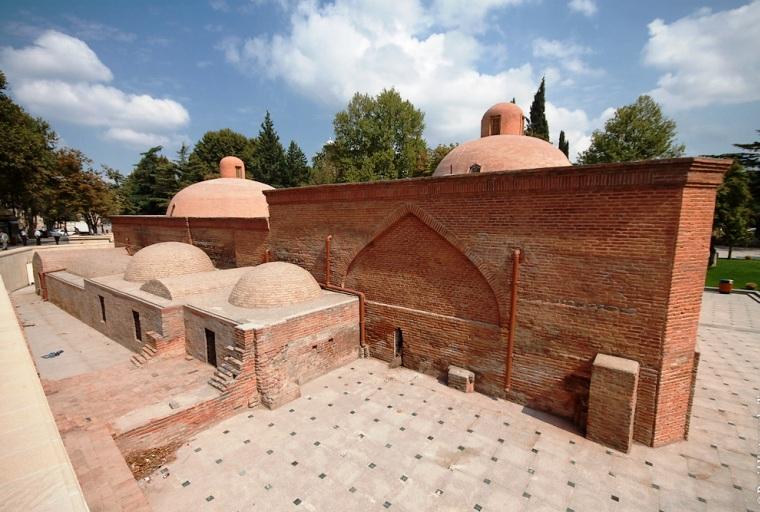
See: Nizami Mausoleum
Don’t miss the Nizami Mausoleum, the cylindrically shaped construction made of red granite. The tomb of Nizami was originally built in 13-14th centuries and has been a place of devoted pilgrimage for many centuries. According to historian Vasily Bartold, the mausoleum was first mentioned in historical chronicles in 1606. A new mausoleum was built in 1947 in place of an old collapsed mausoleum and rebuilt in its modern-day form in 1991. The mausoleum has become a place of pilgrimage and worship of poets from around the world.
The reason is that the mausoleum was built in honor of the legendary 12th-century Azerbaijani poet Nizami Ganjavi, whose real name was Abu Muhammad Ilyas ibn-Yusuf. The poet was born and spent his whole life in Ganja, which was once the capital of the Azerbaijani Atabeys state. Nizami is known worldwide with his immortal work Khamsa (“Quintet” in Arabic), and his legacy is widely felt in the world. The poetry of Nizami influenced the development of poetry in many other countries of Western and Central Asia.
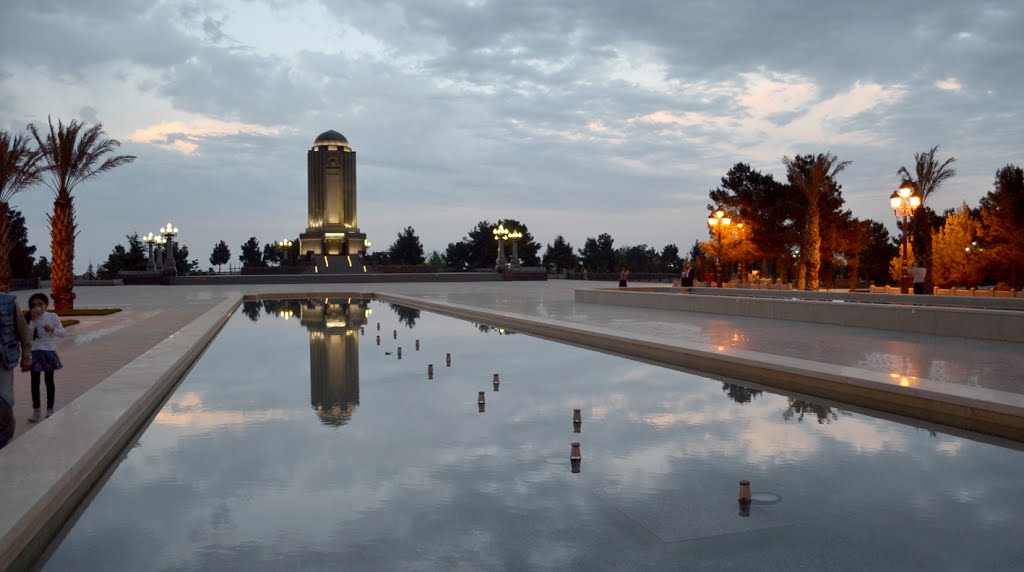
Taste: Dovgha, kata & pakhlava
Your culinary marathon in Ganja should definitely begin with dovgha, a sour milk soup made with gatygh – a fermented milk product similar to yogurt – as well as rice and herbs, including coriander, dill, mint and spinach. Cooks in Ganja add eggs into the dish unlike residents of other regions where variations differ.
Dedicated food lovers could easily spend a week eating qutab that, in its classical form, is made by rolling unleavened dough and filling it with meat, herbs, pumpkin, pomegranate seeds, cheese, onions and chestnuts. But Ganja’s residents do things their own way, as they call qutabs “kata” and add white cheese to the main stuffing, which can be chopped meat or herbs. Similar to gözleme found in Turkey, qutab is eaten with your hands - just don’t forget to roll it up!
If you are going to satisfy your sweet tooth try Ganja pakhlava, a luscious dessert that will leave a lasting taste in your mouth and a lasting impression of Azerbaijan in your mind. Every region of this Caspian country has its own recipe for preparing what is a national favorite. The northern region of Sheki, for example, makes square-shaped pakhlava; while in Gabala it comes as a triangle, known as uchgulag or “three ears” in Azerbaijani. In Ganja, it is made in the shape of a diamond, meant to symbolize a star, and is prepared with rose infusion and covered with saffron.
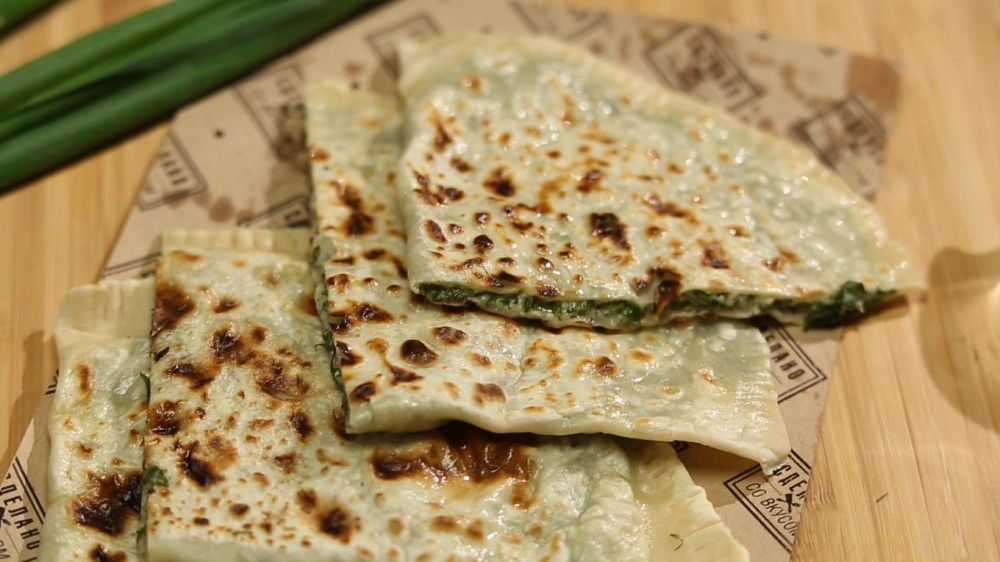
Buy: Carpets
Since ancient times, Azerbaijan has been known as one of the world’s ancient centers of carpet weaving, because the history of Azerbaijani carpets dates back several millennia. As of today, Azerbaijani rugs are being kept in the White House, the U.S. State Department, and dozens of museums including the Metropolitan Museum of Art, the Museum of Fine Arts in Boston and the Philadelphia Museum of Art.
There are seven recognized Azerbaijani carpet weaving schools that are known with their specific artistic and technical features. Each school has its own style of ornamentation. The carpets of Ganja differ from other carpets in Azerbaijan with their patterns, variety of compositions and elegance of contours. The best examples of Ganja carpets are the ones called "Gadim Ganja" and "Fahkrali.”
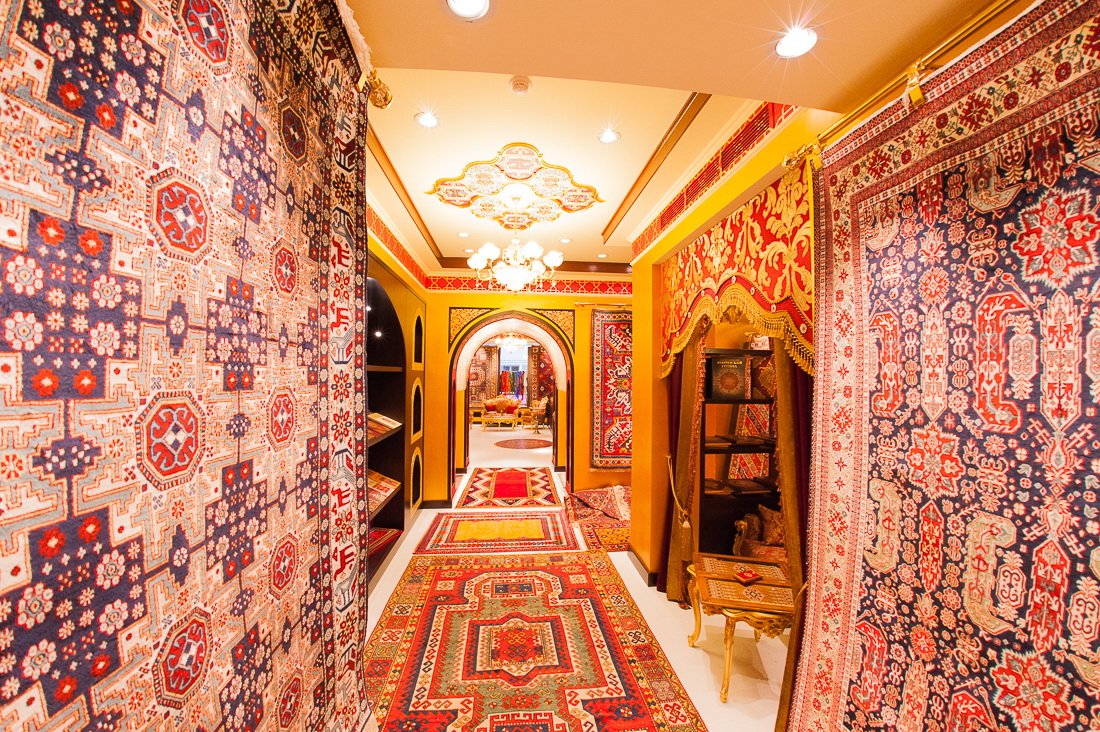


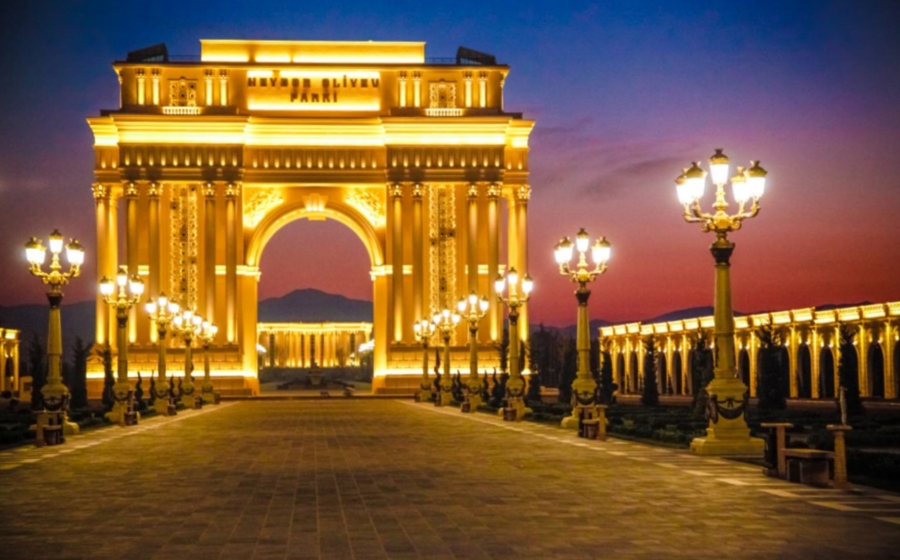




 Azerbaijan has been recognized as one of the safest countries in the world, ranking 90th among 163 countries on the Global Terrorism Index 2025 (GTI).
Azerbaijan has been recognized as one of the safest countries in the world, ranking 90th among 163 countries on the Global Terrorism Index 2025 (GTI).
 The Azerbaijani Defense Ministry has reported ongoing shelling of its army positions by Armenian forces since last week.
The Azerbaijani Defense Ministry has reported ongoing shelling of its army positions by Armenian forces since last week.
 Iranian Foreign Minister Abbas Araghchi has urged the International Atomic Energy Agency (IAEA) to take a "transparent position" regarding potentia...
Iranian Foreign Minister Abbas Araghchi has urged the International Atomic Energy Agency (IAEA) to take a "transparent position" regarding potentia...



